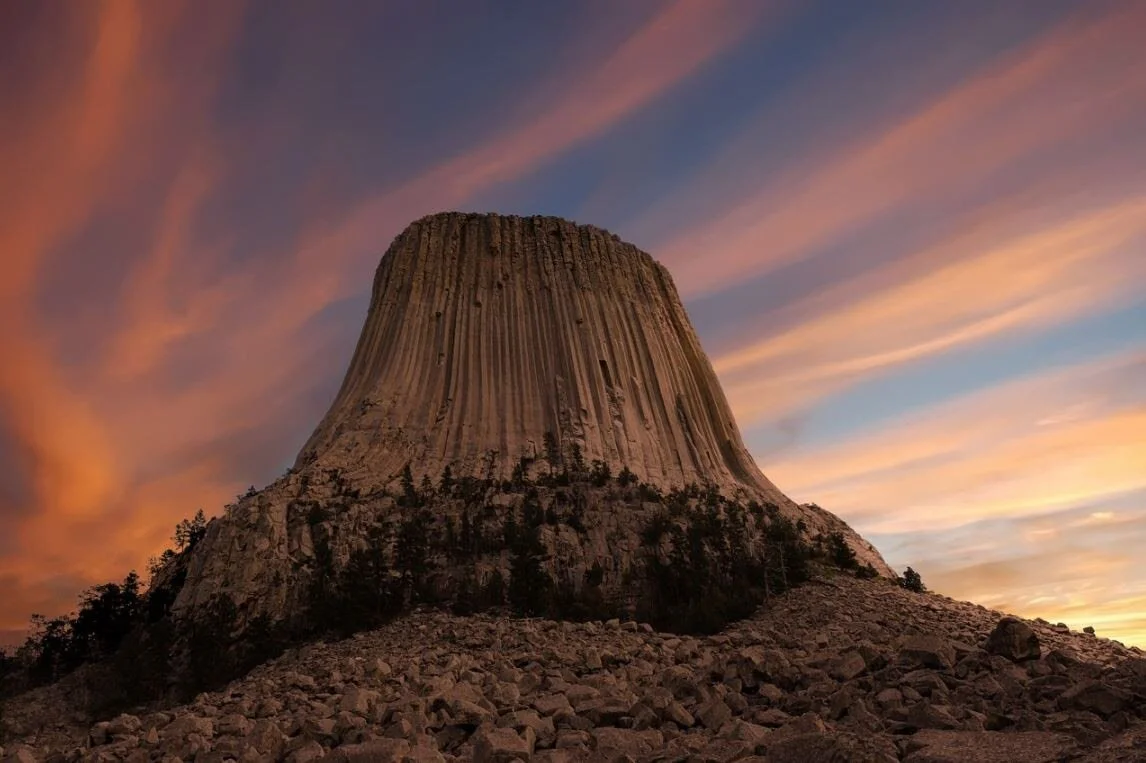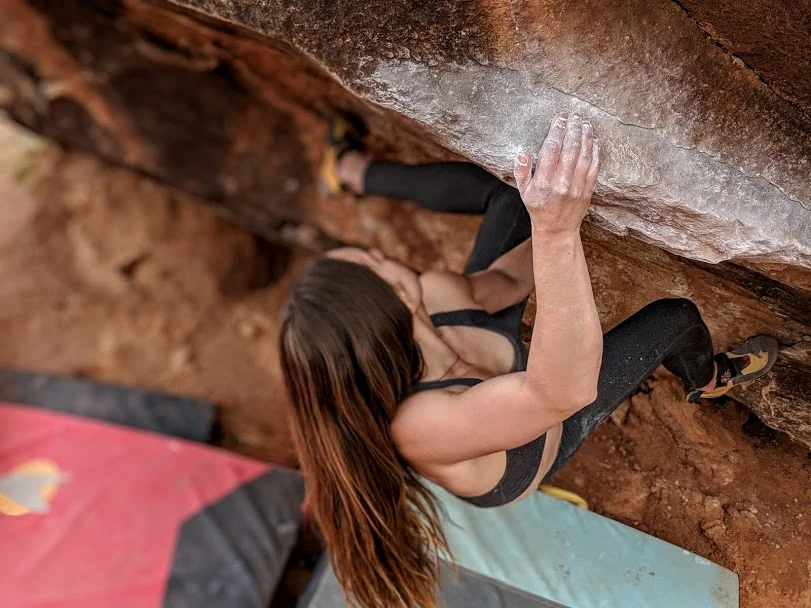Rock Climbers Etiquette for Climbing Outdoors
For many climbers, time in nature is not only important but absolutely essential to our mental and physical wellbeing.
After all, if rivers and glaciers did not carve up the country, if natural tectonic shift did not push mountains into the sky, and if wind and rain did not erode the landscape, there would be very little rock for us to be able to enjoy our favorite sport on. Rock climbing is a fantastic way to literally and mentally connect with the natural world around us, and it is our responsibility to protect the crags and natural spots where we enjoy the sport.
It is no secret that the world needs our help if it is to continue to support us as a species. Many climbers are at the forefront of environmental activism, driven by larger brands within the climbing community such as Patagonia, who are continually working on ways to reduce their environmental impact and protect vulnerable areas. All this is all brilliant, however, many climbers ignore the tiny differences they can make to their local community.
This, unfortunately, often drives communities to push back against the sport of climbing and creates unease and conflict in some of the best climbing areas in the world. These conflicts not only ruin the sport for the climbing community but can also leave the nature that we love at risk.
As with any outdoor activity, when climbing, you should aim to leave no trace behind. This essentially means that when you leave the crag, there is no evidence of your time there, and it is even better if you can leave the area in a better condition than when you arrived. Take only photographs, and leave only footprints. Here are a few ways in which you can preserve your local outdoor climbing area, for the climbing community, the local community, and the natural world that you share it with.
Climbing Chalk
The humble powder that we sparingly rub everywhere to increase friction can be rather controversial. Many climbing areas actually ban the use of it for numerous reasons, and yet in these places, you will likely find a plethora of eager climbers chalking up without a second thought. Those areas which do allow the use of chalk are heavily littered in the fine white powder, and white smears on the surfaces and piles of spilled powder can be found everywhere.
Climbing in Kalymnos.
Firstly, before traveling to your chosen climbing destination in Asia, Europe or USA, do some research on the local etiquette, and find out what is and what isn’t allowed. If chalk is forbidden, it will be one of the first things mentioned on every climbing page, but ensure that you thoroughly read and fully understand the rules.
If it is forbidden, in places such as the Sächsische Schweiz, then simply don’t use it. Don’t even take it so that you don’t feel tempted. Climbing chalk is not the same substance that you would use to write on a blackboard with - it is a magnesium carbonate compound that can be very abrasive to the rock. It can react with the surface and speed up the process of erosion, and before long, some of the most vital holds on the hardest of cruxes are broken, and classic routes can be rendered unclimbable. The use of chalk does have an environmental impact, and this should be carefully considered before smearing the substance all over your hands.
If you are in an area where chalk is allowed, still be careful. Take an array of brushes with you to the crag to ensure that you can thoroughly brush down every hold on the descent of each climb, where possible. Use the substance as little as possible, and do your best not to spill any on the floor, ensure that you clean up as much as possible if you do.
Litter
Nobody likes littering. We all know it’s bad, we all know not to do it, and we all know that it negatively impacts the environment. Even though climbers are often the most considerate of environmental advocates, a few things often slip under the radar and are worth bearing in mind when you are climbing outdoors.
Small pieces of climbing tape, for example, are not difficult to find around the base of popular crags. If you regularly tape up, ensure that when you take each piece off, you store it somewhere to take away with you and properly dispose of. If it comes off while climbing, do a thorough scan of the climbing area at the base of the route at the end of your session to try and locate anything you have dropped. By doing this, if you happen to find any pieces of tape left behind from previous climbers, take it with you too. Just because it wasn’t your fault, doesn’t mean you can’t improve the crag for everyone.
Be sure as well to take any plastic straws, food wrappers and general waste with you. This includes anything that biodegradables such as apple cores and banana skins. There is no guarantee that, despite naturally rotting, these items will not upset the local ecosystem. They are also ugly and can upset other people using the area, which can then create tensions between the climbing community and the community of those living in the region. It is annoying to carry, but it is even more annoying to argue your case against an angry mob.
Lastly, do your best to remove all of your equipment from the route. It hurts both your wallet and the view if you sacrifice a few climbing carabiners or quickdraws to the wall. Obviously, if you are endangering yourself by retrieving equipment, consider your own safety before doing anything stupid.
Local rules
Each climbing region is different, with different rock surfaces, ecosystems, and landscapes to consider. As a result, different climbing regions have different rules, usually put in place by a local committee that implements them to protect local communities, the surrounding nature, and the safety of those partaking in the sport. Ensure that you thoroughly research your climbing destination, sometimes with the help of informative guidebooks, before you commit to climbing on the rock. Here are a few things that regularly shine a negative light on the climbing community.
Indigenous rock art
Anyone who follows climbing blogs will have seen articles where precious artwork from local tribes has been tarnished by careless climbers. This is something that, unfortunately, is a semi-regular occurrence in places such as The Grampians in Australia, or numerous locations across the USA. Information on where you can and can’t climb is usually published online, and following the rules will ensure that you leave ancient artwork alone. If you know there are rock drawings in the area, try to educate yourself on how to spot and respect them. If you do see any, stay clear of it.
Nesting birds/local wildlife
In climbing areas such as the Frankenjura in Germany, there are regular route closures to ensure the wellbeing of protected species. These are often seasonal and last for half of the year, and if you violate these restrictions and are caught, you can face some hefty fines. Same applies to rock climbing in different stunning crags in Greece, be mindful of the local animals like goats, crickets and all that share the same climbing spaces as us. Humans are not the only species to use the crags, and animals could well depend on the shelter of a perfect jug for their survival. Once more, keep updated and read the regulations of each area before climbing.
Parking and accessing the crag
Unfortunately, climbing areas are often quite hard to reach, and often we have to drive across difficult terrain to access them. Be sure to follow the local rules and park your car or van both safely and away from any vulnerable nature. Do not crush local vegetation with your two-tonne paperweight, do not block hiking paths or access for others, and respect the area around you. Use only existing trails, do not trample on or drive over vegetation, and even consider sharing your ride to the rocks to reduce your environmental impact.
Seasonal closures
Seasonal closures can be for many reasons. Sometimes, in the winter cold months, it is quite simply too dangerous to climb. Sometimes rocks are closed for indigenous or religious ceremonies. Sometimes, as aforementioned, it is because of the breeding patterns of local wildlife. Do respect this to ensure the continuity of the harmony between local communities, indigenous tribes, and the nature around us.
Anchors
If possible, try to avoid using trees as anchors. Friction from slings from personal anchor systems or ropes can quickly wear down the tree bark and also weaken the entire tree. If you do have to use a tree, try to protect its exterior as much as possible. This can be done by using a sling and carabiner instead of wrapping a rope around the plant. You can also use tree protectors such as those which slackliners use.
Where possible, try to build up sturdy anchors on the rock face itself, rather than using vegetation. If you do not know how to do this, do a little research and attempt this at ground level before committing to doing this at height.
Final thoughts
If combining your climbing with an overnight stay, be sure to only stay at designated camping spots so that you do not interfere with the local wildlife. This will also give you a good opportunity to get rid of any waste safely. Try to avoid making campfires, and instead opt for a camping stove for cooking, and a few extra layers for keeping warm. Campfires can start wildfires, and they produce large amounts of carbon dioxide and use up valuable resources.
Last but not least, if you are truly passionate about protecting your local climbing community, you can volunteer to help out. Have a look online to see if there are any programs you can join to help clean up the area and improve it for everybody. If there aren’t any, the very least you could do is a thorough litter search at the base of every crag you climb at.
Only after we effectively protect the areas in which we climb will the rest of the world take us seriously as environmental advocates. Creating harmony between local communities, others using the area for recreational areas, the local nature, and our beloved climbing communities will help us all to work together, to ensure that climbing remains possible, that nature continues to thrive in these protected areas, and that everybody can enjoy these places on our beautiful planet.
Author’s Bio
Lydia Yang is a Singaporean city girl who decided to ditch her high heels for hiking boots and become a full-time traveller and digital nomad. She has been to more than 50 countries to date and shares her travels in her adventure site lydiascapes.com! She has a knack for adventure travel, especially rock climbing, and always hunts down the best climbing spots around the world. Her latest bucket list goal is to go rock climbing in Patagonia some day.









